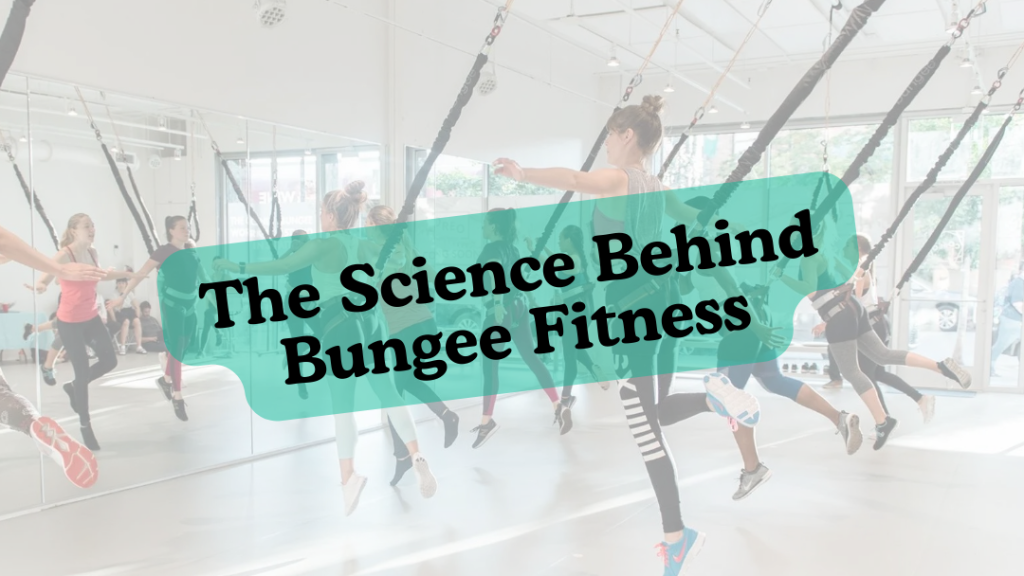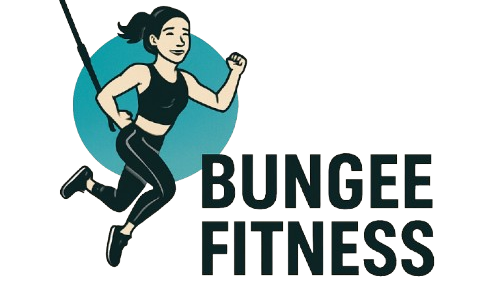The Science Behind Bungee Fitness
Fitness trends come and go, but some stand out because they combine fun with proven health benefits. One of the most exciting developments in recent years is bungee fitness. Using a harness and resistance cords secured to the ceiling, this workout allows participants to perform cardio, strength, and dance-inspired movements with less stress on the joints.

It’s often described as a “gravity-defying” workout, but its effectiveness is rooted in science. By exploring the science behind bungee fitness, we can see how it supports the body, boosts endurance, and even improves mental well-being.
The Evolution of Modern Fitness
Traditional routines like running, aerobics, or lifting weights have long been the backbone of fitness. While effective, they don’t always appeal to everyone. As sports science advanced, people began looking for training methods that were both impactful and enjoyable.
That shift created space for alternatives such as HIIT, Pilates, CrossFit—and now bungee fitness. This workout blends the excitement of aerial movement with the practical science of biomechanics. By providing both resistance and support, it delivers a challenging workout while remaining joint-friendly.
Biomechanics: How the Body Moves in Bungee Fitness
Biomechanics—the study of how the body moves—is at the heart of the science behind bungee fitness. When clipped into a harness, the cords serve two key purposes:
- Resistance: Every squat, push, or leap is met with counterforce, encouraging muscles to work harder.
- Assistance: The cords provide lift, easing pressure on the joints and allowing for movements that would otherwise feel strenuous.
This balance of support and challenge makes bungee fitness distinct. Movements become larger, more dynamic, and more engaging, while stabilizing muscles like the core are constantly activated to maintain balance.
Physiology: Cardiovascular and Muscular Benefits
The impact of bungee fitness extends well beyond its novelty. From a physiological perspective, it supports cardiovascular health, muscular strength, and calorie expenditure.
Cardiovascular Endurance
Because the workout involves continuous, high-energy movements, heart rate rises quickly. This strengthens circulation, increases lung capacity, and improves the body’s ability to use oxygen efficiently.
Muscular Strength
The cords challenge both shortening and lengthening muscle contractions. Exercises such as suspended push-ups or resisted lunges engage multiple muscle groups at once, making it effective for building strength and tone.
Metabolism
The intensity of the workout stimulates the “afterburn effect,” meaning calories continue to be burned even after the class ends.
The Role of Neuroscience
Another important layer in the science behind bungee fitness is how the brain responds. The novelty of flying, bouncing, and suspended movement triggers a surge of endorphins and dopamine. These chemicals improve mood, reduce stress, and make people more motivated to continue exercising.
Bungee fitness also sharpens proprioception—awareness of where the body is in space. As participants adjust to shifting balance, the brain strengthens neuromuscular pathways, improving coordination and stability over time.
Low-Impact, High-Intensity Training
A major advantage of bungee fitness is its ability to deliver results without punishing the joints.
- Running places stress on the knees and ankles.
- Plyometric jumps can strain tendons and ligaments.
- Bungee cords reduce ground impact by up to 70%, making explosive movements safer and more comfortable.
This unique combination makes it appealing not just for athletes, but also for individuals with joint concerns or those recovering from injury. Many physiotherapists are now considering it as a tool for rehabilitation.
Psychological and Emotional Benefits
The benefits of bungee fitness are not only physical. Participants often describe the experience as liberating and joyful.
- Stress Reduction: Playful, dance-like movements help lower cortisol levels.
- Confidence: Mastering new skills and aerial movements builds self-belief.
- Community: Group sessions foster connection, which research shows improves adherence to long-term fitness.
Enjoyment is often the missing piece in fitness routines. Bungee fitness fills that gap, encouraging consistency through fun.
Bungee Fitness vs. Traditional Workouts
When compared with other forms of exercise, the advantages become clear:
| Feature | Traditional Cardio | Weight Training | Bungee Fitness |
|---|---|---|---|
| Impact on Joints | High | Moderate | Very Low |
| Muscle Engagement | Limited | Isolated | Full Body |
| Calorie Burn | High | Moderate | High |
| Enjoyment | Moderate | Low-Moderate | Very High |
| Skill Development | Endurance | Strength | Balance, Agility, Strength |
This comparison highlights how the science behind bungee fitness merges the benefits of cardio, resistance, and agility into one efficient workout.
Equipment and Safety
The effectiveness of bungee fitness relies heavily on its equipment.
- Harness: Evenly distributes weight for comfort and safety.
- Elastic Cords: Provide progressive resistance—the more they stretch, the greater the challenge.
- Mounting System: Built to withstand multiple times the user’s weight, ensuring stability.
Proper setup and instruction are essential. That’s why training with certified instructors is recommended, especially for beginners.
Research and Evidence
Early studies in exercise science support what practitioners already observe in classes:
- Higher calorie burn compared to standard aerobics.
- Improved balance and core stability within weeks of consistent training.
- Reduced discomfort for participants with pre-existing joint pain.
Although research is still developing, initial findings confirm the physical and psychological advantages of this training style.
Who Can Benefit?
One of the reasons bungee fitness is growing rapidly is its inclusivity.
- Beginners can ease into fitness with less strain.
- Athletes can cross-train and improve agility.
- Rehabilitation patients can rebuild strength in a controlled, low-impact way.
- Older adults can stay active without excessive stress on the body.
This versatility makes it suitable for a wide range of people, regardless of age or fitness background.
The Future of Bungee Fitness
As awareness grows, bungee fitness is moving from boutique studios into mainstream fitness spaces. Trainers and therapists are refining its applications, from high-energy group workouts to clinical rehabilitation.
It may also play a role in schools and youth programs, offering a playful way to keep children active. With its proven benefits, bungee fitness is set to be more than a passing trend—it’s likely to become a permanent part of the fitness landscape.
Conclusion
Looking at biomechanics, physiology, and psychology, it’s clear why bungee fitness works. It provides resistance and support at the same time, improves cardiovascular and muscular health, protects the joints, and lifts mood.
Understanding the science behind bungee fitness helps explain why it’s more than a novelty. It’s an accessible, effective, and enjoyable way to exercise—one that has the potential to reshape how we think about fitness in the years ahead.






